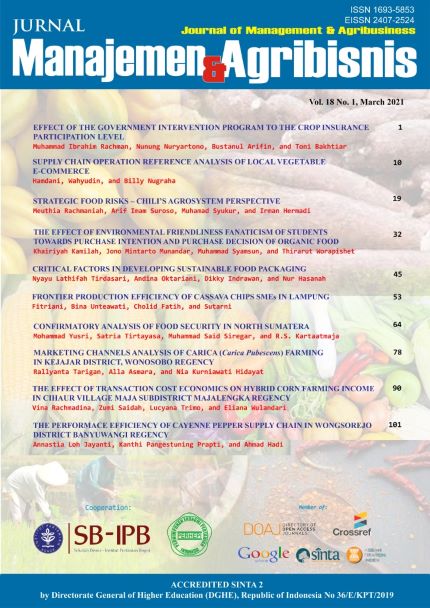Abstract
The sustainability issue has pushed the food industry, continually looking for new materials to reduce and replace plastics in their packaging. However, the recent development of novel materials is still less satisfactory due to different involvement from different vital players such as government, society, and industry. This paper analyzed the critical success factors of new material development for food packaging based on different key players, involvements, and interests. A survey was conducted by the authors to gather information related to the development factors and the participation factors based on the three key players. This research employed descriptive quantitative design. This design allows research to collect and describe the found clusters and factors. The results revealed that the critical success factors are classified into five clusters, namely technical substitution, technical drivers/barriers, application barriers, cost barriers, and raw material supply barriers. Differently from developed countries, the critical vital players' participation, especially from the government, was essential in developing new material for food packages.
Keywords: critical success factor, descriptive quantitative, food industry, food packaging, sustainability development goals
Authors
Authors who publish with this journal agree to the following terms:
- Authors retain copyright and grant the journal right of first publication with the work simultaneously licensed under a Creative Commons Attribution License that allows others to share the work with an acknowledgement of the work's authorship and initial publication in this journal.
- Authors are able to enter into separate, additional contractual arrangements for the non-exclusive distribution of the journal's published version of the work (e.g., post it to an institutional repository or publish it in a book), with an acknowledgement of its initial publication in this journal.
- Authors are permitted and encouraged to post their work online (e.g., in institutional repositories or on their website) prior to and during the submission process, as it can lead to productive exchanges, as well as earlier and greater citation of published work (See The Effect of Open Access).

